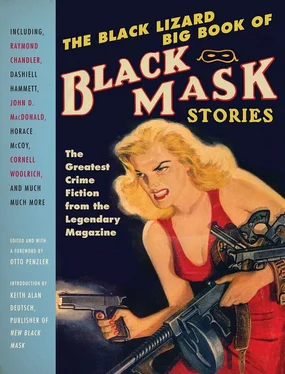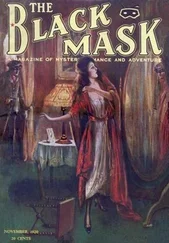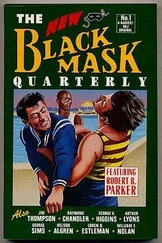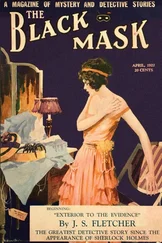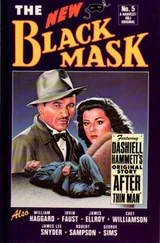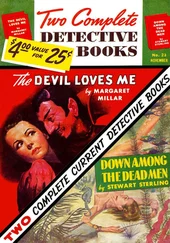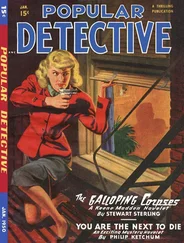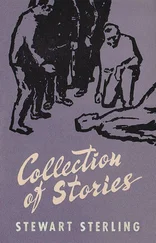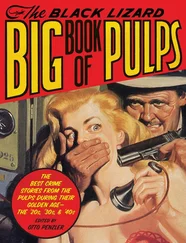The first great magazine person I met was Adrian Lopez. He was my publisher for Black Mask, and I remember with great fondness the hours I spent at his side listening to stories about magazine history. Starting in the 1940s, Adrian published magazines for over sixty years, including Sir, True, Laff, Real Crime, Surfing, and Lady’s Circle. He had been a newspaper reporter and a pulp fiction author in the 1930s. He told me he had written for Black Mask, Dime Detective, Argosy, and many other pulps, but I have been able to confirm that he wrote under his own name only for Gangster Stories.
One of the first lessons of pulp magazine publishing is that much information has been left off the magazines’ mastheads and contents pages. One of the most perplexing problems facing a pulp fiction historian is the endless and confusing array of pseudonyms and house names behind which authors hide.
As a matter of fact, both Dashiell Hammett and Erle Stanley Gardner made their first appearances in Black Mask in the early 1920s under pseudonyms Peter Collinson and Charles M. Green, respectively. In the early 1930s, Raoul Whitfield often appeared twice in a single issue of Black Mask, once under his own name and once as Ramon Decolta, under which all his famous Jo Gar stories appeared. Many pulps had house names that were used by any writer as needed whenever he had already contributed a story to an issue. But not Black Mask. Very few writers appeared twice in one issue of Black Mask under any name. An exception I discovered is the tale “Long Live the Dead,” by Allen Beck. It was actually written by Hugh B. Cave, but “Smoke Gets in Your Eyes,” which is included in this collection, also appeared in that same December 1938 issue of Black Mask, and the editors gave Hugh a pen name for that one issue. Even E. R. Hagemann, who compiled the meticulous index of record A Comprehensive Index to Black Mask, 1920–1951 (Popular Press, Bowling Green, Ohio, 1981), missed that pseudonym.
Few writers kept records of all their pen names, which makes setting the record straight difficult. Prentice Winchell, who wrote famously for Black Mask as Stewart Sterling, was kind enough to send me a long list of his pen names in the early 1970s. Hugh B. Cave kept meticulous records, and I have published a partial bibliography of his writings and pseudonyms in Long Live the Dead (Crippen & Landru, Norfolk, Virginia, 2000). But this kind of magazine detective work is always hit-and-miss.
I was lucky exploring and detecting the past of magazine publishing, and especially the history of Black Mask. When I suggested to Adrian Lopez that we bring back Black Mask in 1973, he was excited. Not only did he like the idea; he knew the man who could help us. His good friend David Geller had acquired Popular Publications, Inc., then the current owner of Black Mask , and forty or so other pulp magazines. None were being published. World War II and the rise of paperback books had killed them all.
That David Geller, who was a magazine advertising man and never a magazine editor or publisher, ended up as the proprietor of a treasure chest of famous pulp fiction titles, and hundreds of thousands of intellectual property rights in stories and art in which he had little interest, reveals something about the power and the vulnerability of advertising in the cultural history of twentieth-century magazine publishing.
As Adrian Lopez explained it to me, people like Geller placed direct-mail-order advertisements in magazines, and these direct-mail pitches were often more successful commercial enterprises than publishing the magazines themselves. Geller was one of the best advertising placement men, representing himself and other advertisers, and, as magazines began to fail, he found it profitable to take them over from desperate publishers in order to maintain these publications just for the advertising revenue. Magazines that were losing money on subscriptions and newsstand sales could still be profitable. David Geller Associates is still a major player in direct-response magazine advertising and today represents a monthly marketplace of over 200 million readers.
And so, with Geller’s backing, I soon found myself at the editorial offices of Popular Publications, seeking magazine mysteries deep in the complete run of the original bound publisher’s volumes of Black Mask. When I visited Popular in 1973, it had been reduced from one of the greatest pulp fiction houses of all time to primarily the publisher of Argosy, then a large-circulation general-interest magazine that featured factual articles and popular fiction starring famous characters like James Bond, Shane, and Captain Horatio Hornblower.
Argosy had been the very first pulp fiction magazine, started in the 1890s by Frank A. Munsey, whose company went on to produce myriad classic pulp fiction magazines. In 1942, Popular Publications, under the guidance of its founder, Henry Steeger, acquired all the Frank A. Munsey Co. pulp titles. Two years earlier, Steeger had acquired Black Mask, which he considered the jewel of the pulps, from Black Mask ’s original publisher, Pro-Distributors Publishing Company, Inc.
The name of Black Mask ’s original publisher is significant, and has been overlooked by many historians. In the first decades of the twentieth century, as pulp fiction and slick magazines became designed commodities sold in the national marketplace as impulse items, the national distribution network grew in importance. Like newspaper distribution on a local city scale, magazine distribution was a tough business on a regional and national scale, and winning good display space could be a battle.
Much has been made of H. L. Mencken’s role as the originating publisher of Black Mask. Despite his assertions of original ownership, nowhere on any masthead does Mr. Mencken’s name appear, nor does his alleged initiating partner George Jean Nathan’s. Although Black Mask ’s address in the first issue is given as 25 West 45th Street in New York, the same as Smart Set, which was edited by Mencken and Nathan, Smart Set was published and owned by Eltinge F. “Pop” Warner and Eugene F. Crowe. “Pop” Warner also owned Pro-Distributors Publishing Company.
I could never find a chain of title that indicated that ownership in Black Mask, or Pro-Distributors, went back to Mencken. That doesn’t mean I do not find his statements credible. In fact, given his stated distaste for the early issues, and the rather lackluster editing done by F. M. Osborne, a woman also on the staff of Smart Set, I believe Mencken did help start up Black Mask. What is certain is that Pro-Distributors Publishing Company, Inc., was the publisher of record from 1920 until 1940, when Henry Steeger acquired Black Mask for Popular Publications.
Eltinge “Pop” Warner, who is usually overlooked by commentators, must be given some credit for the success of Black Mask. Warner acquired Field & Stream magazine from its founders in 1906 and ran that publication so successfully that it is now one of the oldest continuously published magazines in America, and still going strong with an estimated 10 million circulation! Warner had a sure hand as a publisher.
As an aspiring publisher myself, I took about three months to study Black Mask in preparation for assembling my first issue. The formative issues of the magazine, from 1922 to 1924, after George W. Sutton Jr. took over as editor, with H. C. North as assistant editor, contain letters by Dashiell Hammett describing his life and professional experiences, and his struggles to improve his writing. There is a vibrant dialogue between editors, readers, and writers of the new fiction. And once the original illustrated headings and illustrated capital initials by that genius of dry brush Arthur Rodman Bowker were added to the mix, the magazine soared.
Читать дальше
